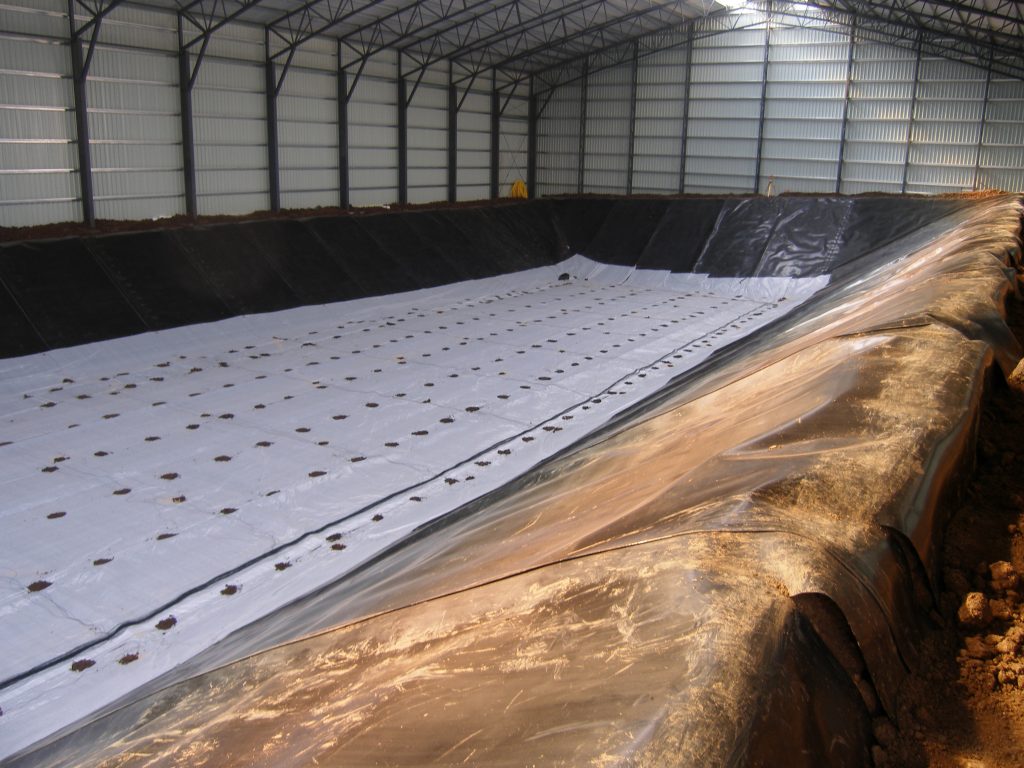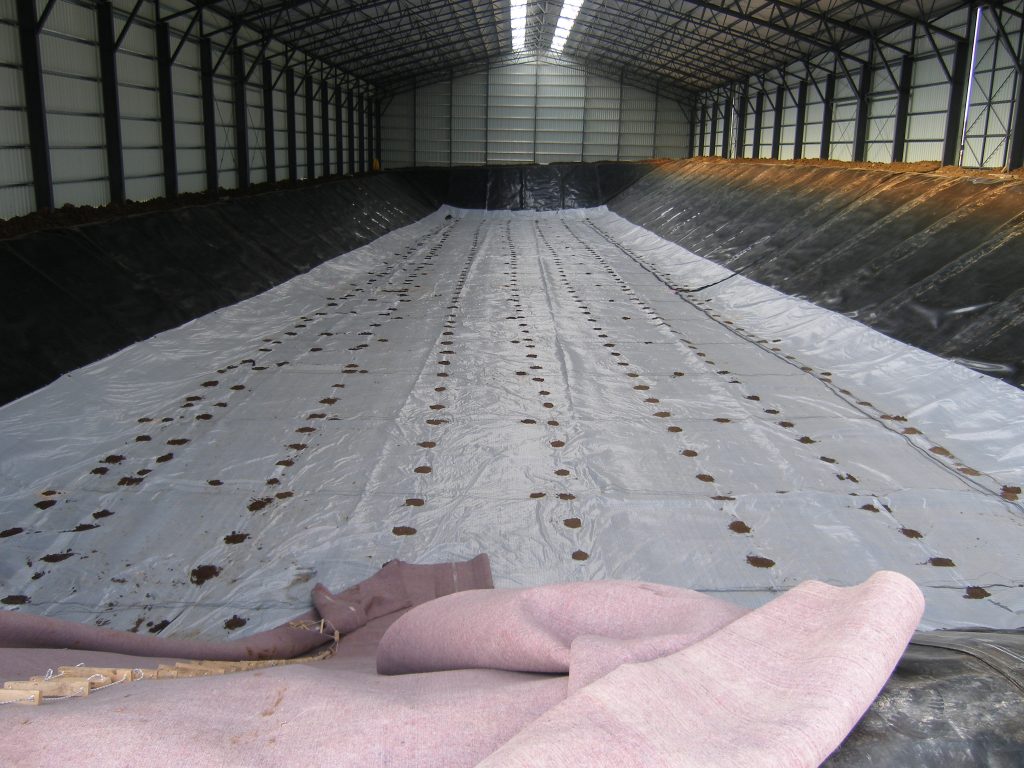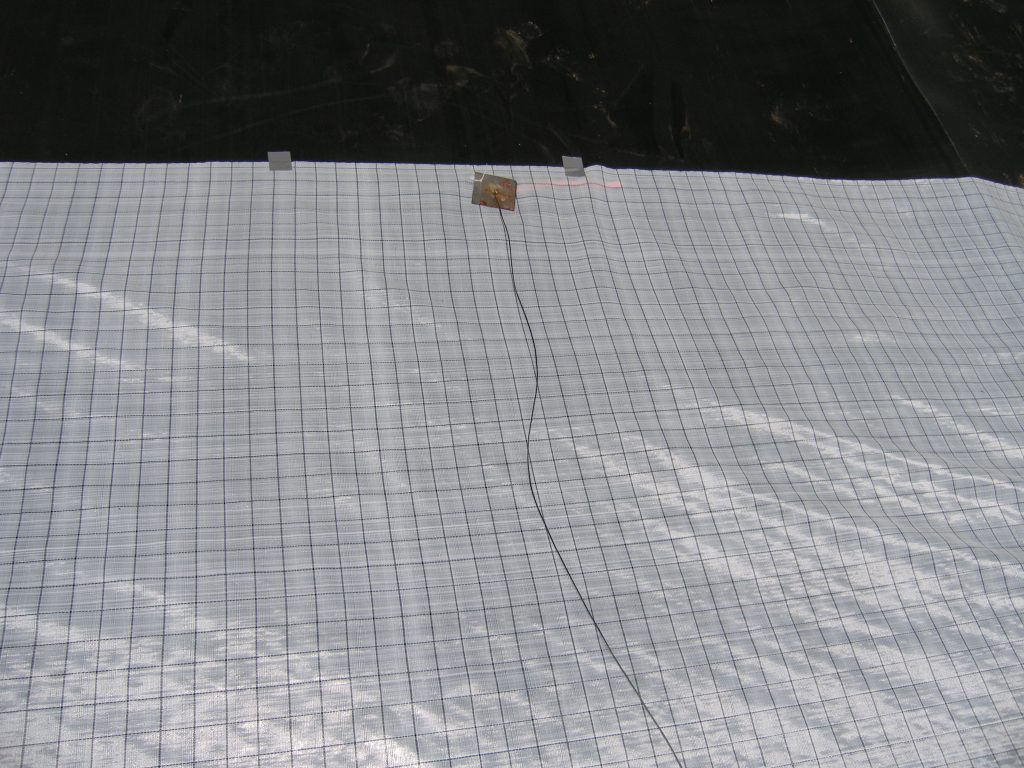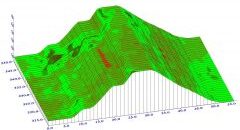While we were testing the monitoring system installed on green roofs, it turned out that due to the drying out of the ceiling, the environment of the installed sensors is so dry that the electrical connection is ceased. With that the leak detection survey cannot be performed, as one of the basic conditions is electrical conductivity.
The same problem emerged during double geomembrane installation, when between the layers not gravel drainage layers is used, but plastic grid or another scheme. Here again, performing the leak detection survey is quite hard, in worst case scenario impossible.
Our goal was to develop a new arrangement, which even under the above-mentioned conditions ensures the electrical connection between the sensors, the minimal 0.05 mA electrical current, thus guarantees the quality of the monitoring system. Based on international examples, we used electrically conductive geotextile during the installation of the monitoring system. Electrically conductive geotextile has a definite electrical resistivity and ensures the quality of the monitoring system.
During testing we built a lab model where 64 sensors were applied onto geotextile in a 5×5 cm grid. Below the geotextile, there was a geomembrane layer as well, as you can see on the figure below. The model was installed in a closed, perfectly dry location where no electrical conductivity can arise. In the next phase, an artificial hole was made in the HDPE pool filled with water and leak detection survey was performed. On the figure below the red cross shows the location of the hole.
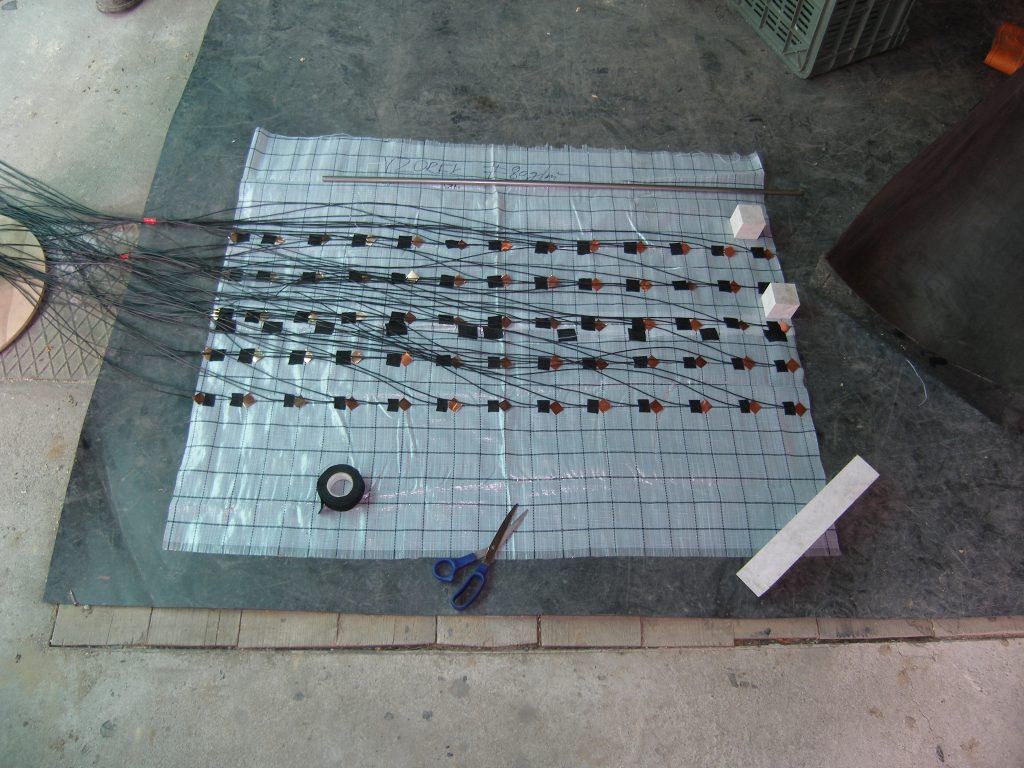
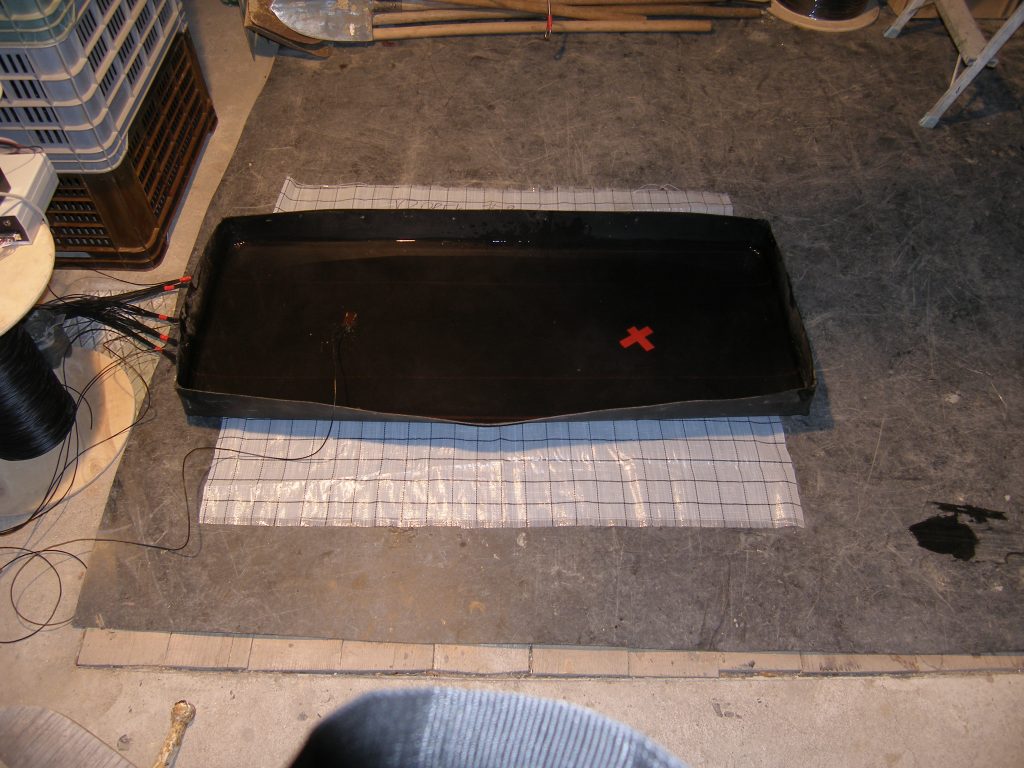
On the below graphs the survey results are shown in case of both horizontal and vertical dipole. The intersection of the two separator lines (between the positive range marked with red and the negative range marked with blue) shows the place of the detected hole, which is in line with the red cross on the above figure.
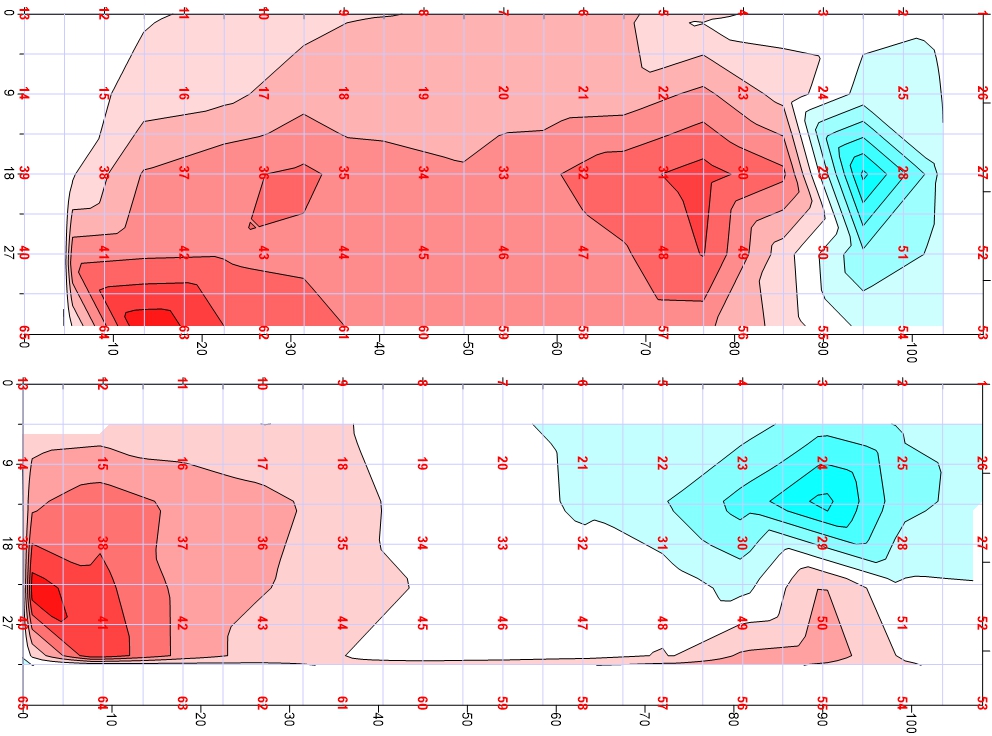
After the successful lab results, the electrically conductive geotextile was tested under real conditions and is used currently at our monitoring systems. The electrically conductive geotextile meets the requirements as it ensures the electrical connection between the sensors even in perfectly dry environment, thus guarantees the quality of the monitoring system.
